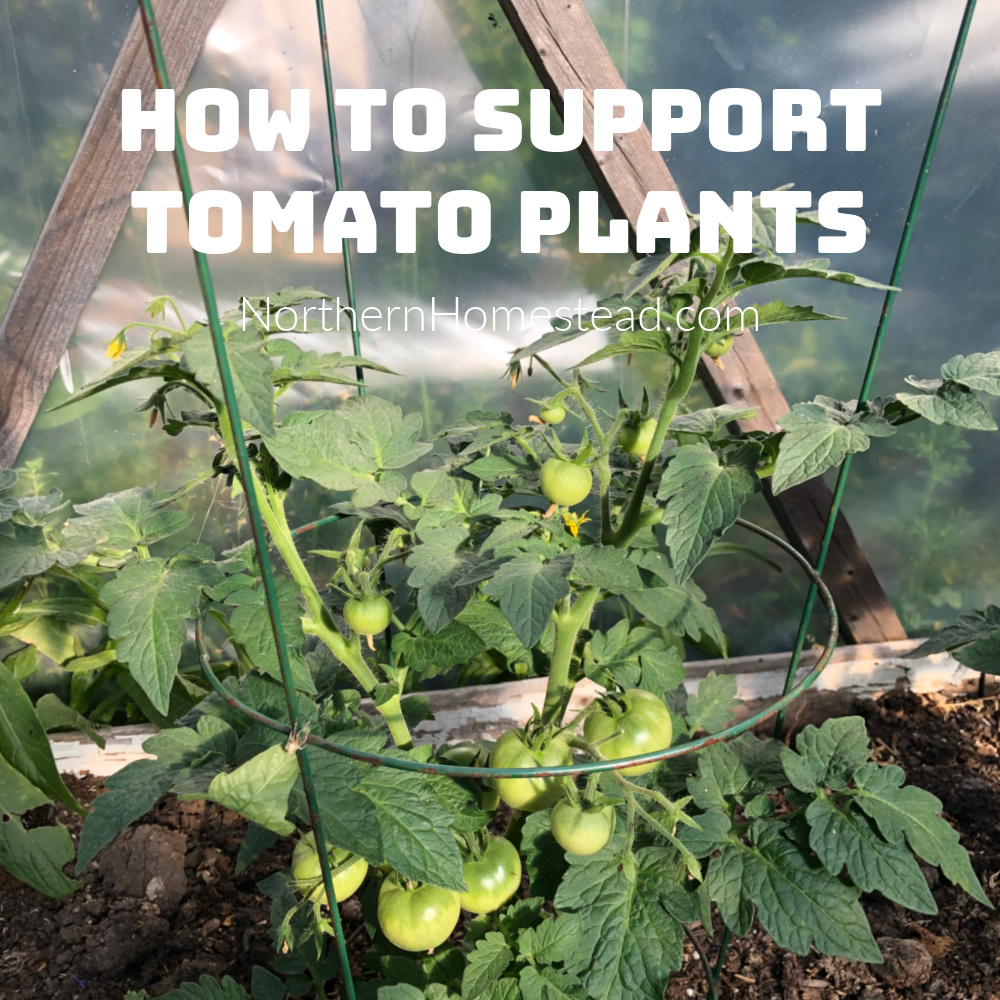
Once the tomato plants are in the ground and growing, they will require support. There are various ways to support tomato plants, and once you understand their needs, the possibilities are nearly endless. However, we have two favorite methods that have proven effective for us over the years.
Why do tomato plants need support?
Regarding support, vine and bush tomatoes are two different tomato plant varieties.
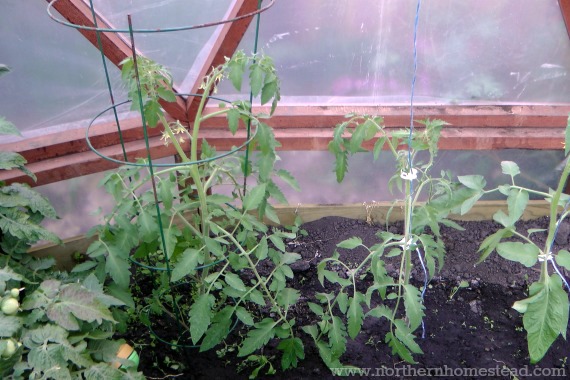
Vine-type tomatoes are the most common tomatoes that gardeners grow. Long-season tomato varieties are all vine-type plants (also called indeterminate). These plants grow as long as the weather and/or the environment allow it. If not given any support, these plants will vine on the ground and become one massive plant that will often kill itself by getting diseases from the moist surface of the earth. Even though they are called vine-type varieties, tomatoes do not climb independently. They do need support and help to hold on to the support.
All the determinate and most dwarf varieties are bush-type tomato plants. You can also prune a vine-type plant back to be a bush. A bush-type plant does not need as much support as a vine-type tomato plant, but does appreciate some support in a cage.
Very few tomato varieties do not need any support because they are small and sturdy enough to stay in form on their own, or they are a dwarf variety that does great in a hanging basket. These tomato plants are the exception.
Before you plan your support, you need to know what you’ve got. Do you have an indeterminate vine-type plant that will grow very tall, or do you have a determinate or dwarf bush tomato plant? A seed package will tell you that. If in doubt, Google your plant’s name; in most cases, you will find a seed company with all the needed information.

Based on our experience, it is easiest to give all tomatoes a cage at planting, whether they are vining or bush varieties. This prevents them from falling over and protects them from accidentally breaking. Trust me, I’ve made that mistake before! So, using a simple cage for all of them at the start is our practice.
How to support vine-type tomatoes
Since vine-type tomato plants (also called indeterminate) continue to grow during the whole growing season, they need tall support. Also, it will make a big difference in your support choice if you prune a vine-type tomato plant back to a single stem or let everything grow into a huge bush. We prefer the single-stem method. You can read more about pruning here: To prune or not to prune tomato plants.
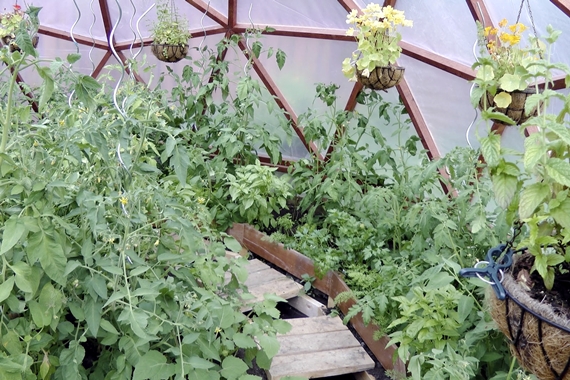
When we first started growing tomatoes, we used a Spiral Stake. It worked, but we noticed that tomato plants could quickly outgrow a stake. A stake is great if you grow an indeterminate cherry tomato plant in a pot leaning onto a wall.
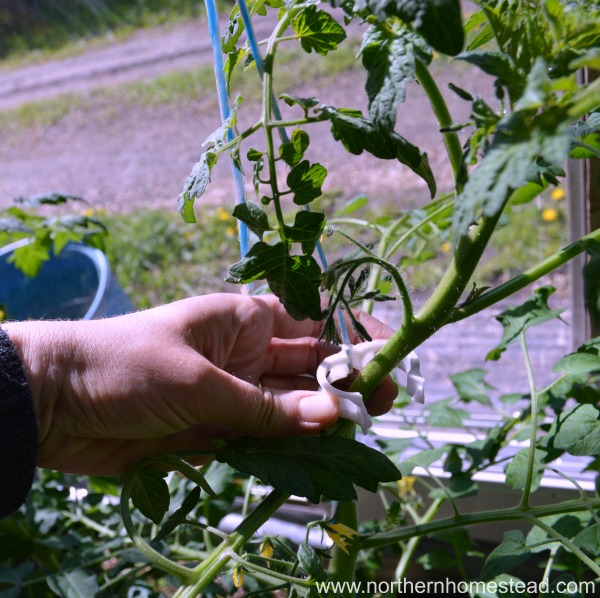
In the greenhouse, we started using twine with clips. This method allows us to grow plants as tall as the greenhouse allows. It is an easy and inexpensive support method suited for greenhouse growth.
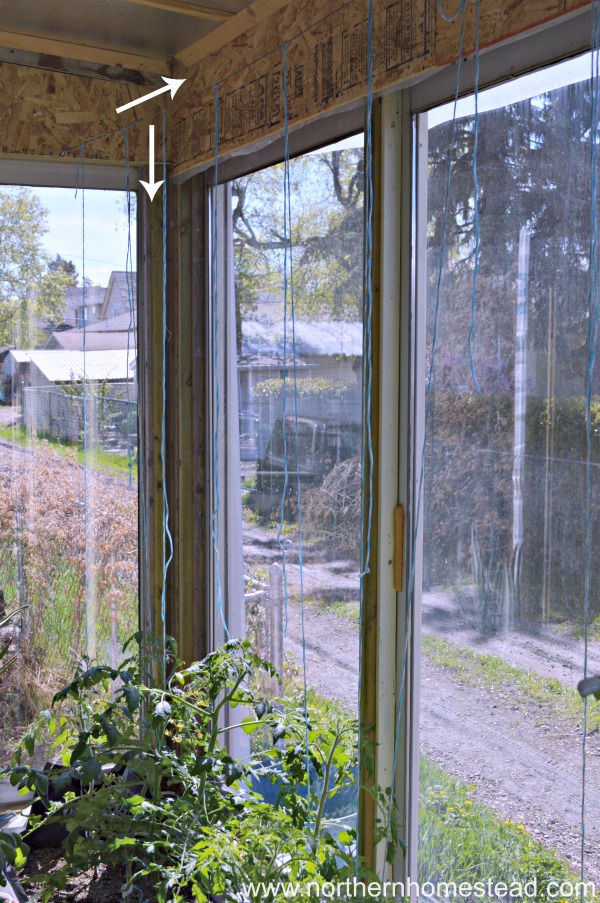
To use twine with clips, you will need a structure to hang the twine onto. We have used a galvanized steel cable that we hang all the twines on (see picture below). You can also use the greenhouse’s structural support to string the twine.
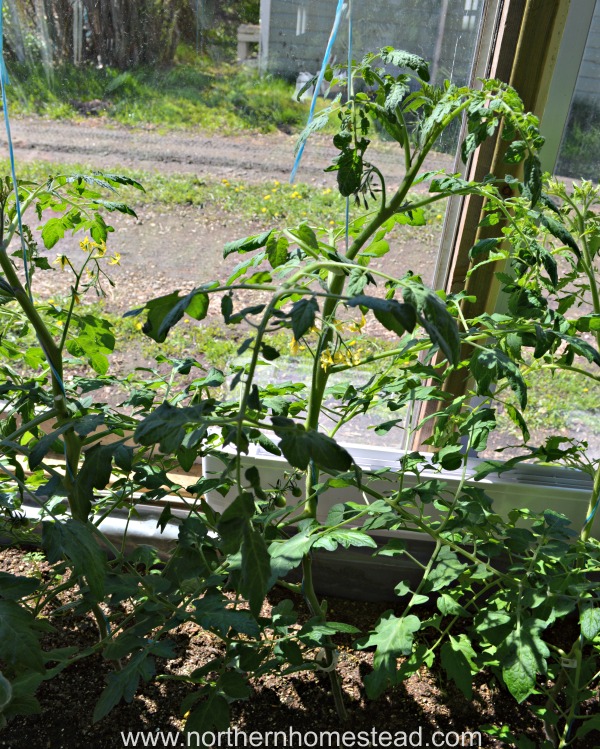
We often use one or two clips at the beginning and wind the plant around the twine afterward, using fewer clips this way.
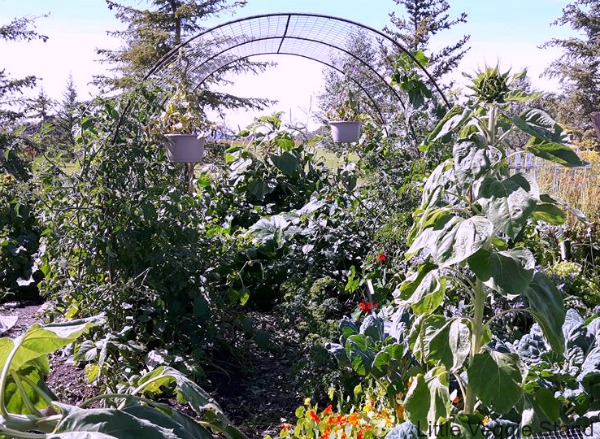
For the garden, an archer trellis seems to work great. We do not grow vine tomato plants in the open ground because of our short season. But if you do, this is a great way to support not just tomatoes—photo credit to Little Veggie Stand.
How to support bush-type tomatoes
For bush-type plants, we use a simple support cage. For our short growing season, that’s all that is needed. I must admit, though, that sometimes, when plants are loaded with fruit at the end of the season, the cage has to work hard to keep everything straight.
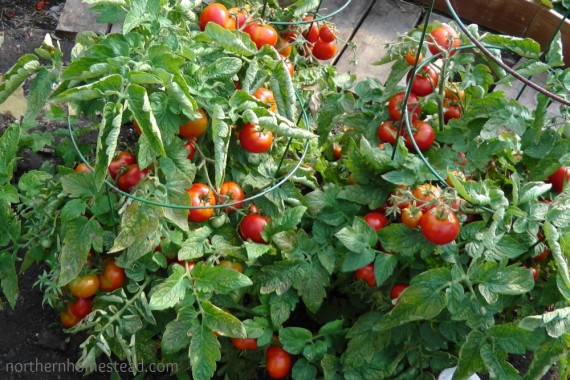
As we mentioned before, use the support cage as soon as the plants are transplanted. There is no way to add the cage later in the growing process. The cage can easily be established as long as the plants are small, and tomato plants grow quickly. The support cage also works excellent for container gardening and grow bags.
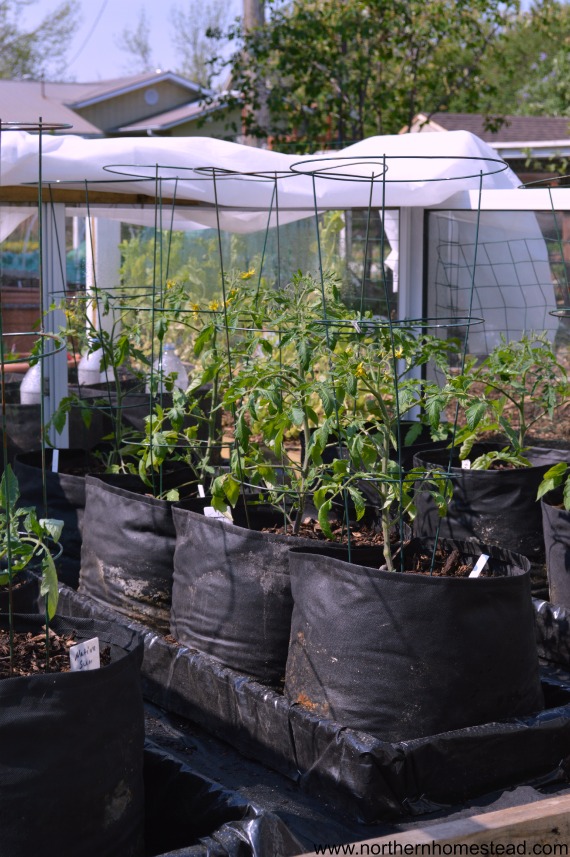
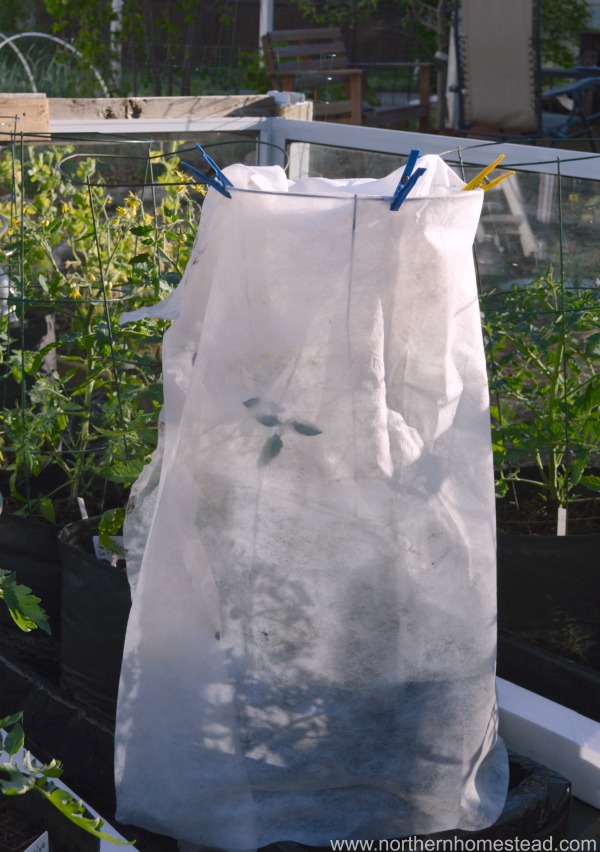
Another advantage of growing bush-type tomatoes in cages is the ability to protect them from cold and frost. By wrapping a Frost Blanket around every cage, you can easily turn it into a little greenhouse. The lightweight blanket can be left on for days to give the plant protection.
What is your favorite way to support tomato plants? Please share in the comments below.
We invite you to subscribe to Northern Homestead and follow us on Instagram, Facebook, or Pinterest for the latest updates.

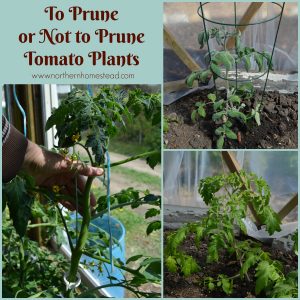
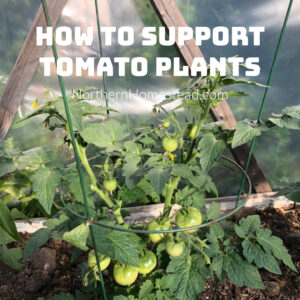
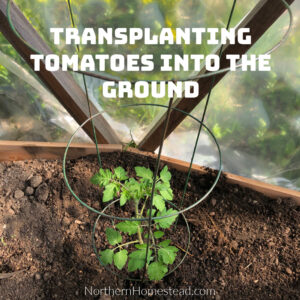
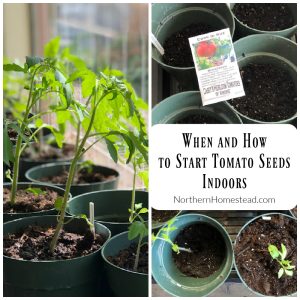
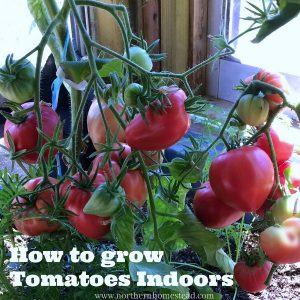
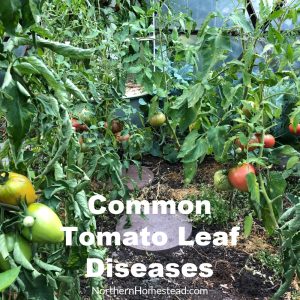

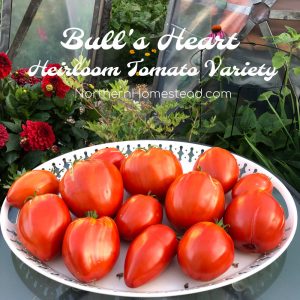
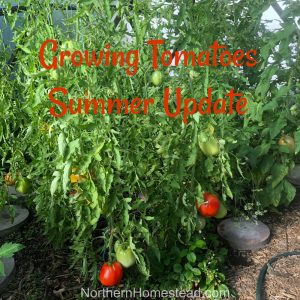
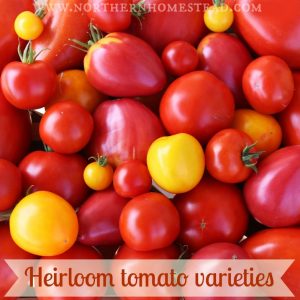

I have had no success “yet” growing tomatoes because of cool temperatures here and I have yet to make that raised-bed-mini-greenhouse-tomato-box…but…I have had some come up in garden compost. Last year one came up in the shadiest part of my garden so I knew there was no hope at all for it!…….but…what a joy it was when walking by to take my hand and gently caress a branch and breath deeply of it’s scent! Amazing! I saw a video some years ago of a couple who grew tomatoes in their greenhouse and they had this “contraption” built on the concept of how a window blind works that they could raise up and down. It also reminded me of a weavers loom. Their plant was huge and they trained the side branches to catch the sun rays so the harvest was amazing.
Hope this will be the year for you to grow great tomatoes. Just find the warmest spot in your garden, make sure the soil is good and grow!